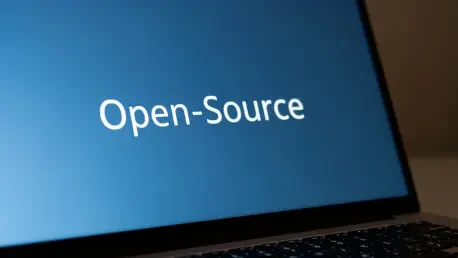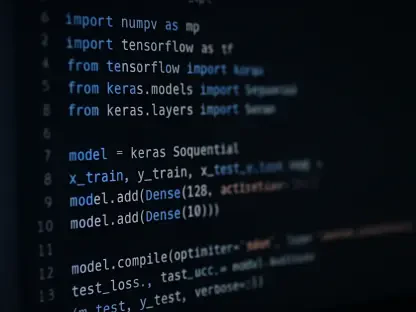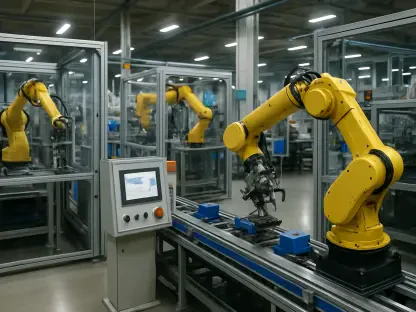Diving into the heart of open-source software development, we’re thrilled to sit down with Anand Naidu, a seasoned expert in both frontend and backend development with a deep understanding of various coding languages. With his extensive experience, Anand offers invaluable insights into the intricate world of Linux kernel development and the practices that shape it. Today, we’ll explore the nuances of commit message quality, the challenges faced by maintainers, and the broader implications for contributors in the open-source community, drawing from recent discussions around documentation standards in the Linux kernel.
Can you walk us through the recent critique regarding the use of “Link:” tags in Git commit messages within the Linux kernel community?
Absolutely. There’s been quite a stir recently about the overuse of “Link:” tags in commit messages for the Linux kernel. The concern is that these tags often point to resources that don’t add much value to the commit itself. Instead of clarifying the purpose or context of a code change, they can clutter the commit logs, making it harder for maintainers to focus on the actual changes during reviews. It’s a frustration that’s been building for a while, especially when these links lead to outdated discussions or barely relevant bug reports.
What specific issues have been highlighted about how these tags impact the review process for maintainers?
The main issue is that they create unnecessary noise. Maintainers are already dealing with a huge volume of patches and changes, and wading through commit messages filled with irrelevant links slows down the process. These tags can distract from the core explanation of what the code does and why it’s needed. The emphasis should be on a clear, concise description right in the commit message, not on external references that might not even be accessible or relevant a few years down the line.
How important is it for commit messages to be self-contained, and why does this matter so much in a project like the Linux kernel?
It’s incredibly important, especially for a project as massive and critical as the Linux kernel. Self-contained commit messages ensure that anyone looking at the history of changes—whether it’s a developer, a maintainer, or someone debugging an issue years later—can understand the reasoning behind a change without hunting down external resources. Links can break or become outdated, but a well-written message stands the test of time. It’s about maintaining clarity and accountability in a codebase that powers so much of our technology.
Could you share an example of how a problematic “Link:” tag in a patch submission was handled recently?
Sure. There was a specific patch submission where a “Link:” tag was included, but it didn’t provide any meaningful context—just a vague reference to some external discussion. The response from the top was pretty firm: the patch wasn’t accepted right away. Instead, there was a clear demand for the contributor to rewrite the commit message with a proper explanation of the change. It wasn’t enough to just point to a link; the reasoning had to be spelled out directly in the message itself.
What does this kind of response tell us about the expectations for contributors in the Linux kernel project?
It sends a strong message that quality matters above all else. Contributors are expected to take the time to articulate why their changes are necessary and how they fit into the bigger picture. It’s not just about getting your code in; it’s about ensuring that every piece of the kernel’s history is documented with precision. This approach pushes developers to think critically about their work and communicate it effectively, which ultimately benefits the entire project.
How might this focus on commit message quality influence the way developers approach their contributions moving forward?
I think it’s going to encourage a lot more discipline among contributors. Developers will likely spend more time crafting detailed, standalone explanations for their changes rather than relying on quick links to external content. This could lead to better code quality overall because when you’re forced to explain your work clearly, you often catch potential issues or rethink your approach. It’s a small change in practice, but it can have a big impact on the integrity of the codebase.
What broader challenges in open-source development does this situation bring to light?
It really highlights the sheer scale of contributions in open-source projects like the Linux kernel. Maintainers are often overwhelmed by the volume of patches they need to review, and anything that adds extra friction—like poorly written commit messages—can become a significant bottleneck. This situation also underscores the tension between welcoming contributions from a wide community and maintaining strict standards. Striking that balance is a constant challenge, and it’s why clear guidelines and expectations are so crucial.
Looking ahead, what is your forecast for how documentation practices might evolve in large-scale open-source projects like this one?
I believe we’re going to see an even stronger push for clarity and self-sufficiency in documentation across the board. As projects grow and the number of contributors increases, maintainers will likely double down on guidelines that reduce noise and streamline the review process. We might see more automated tools to flag issues in commit messages before they even reach a maintainer, alongside a cultural shift toward valuing high-quality explanations as much as the code itself. It’s all about sustaining these projects for the long haul, ensuring they remain robust and accessible for future generations of developers.









